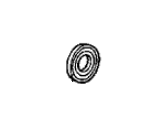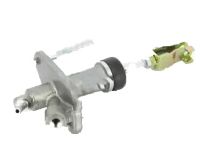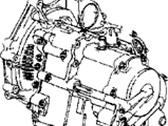- Hello
- Login or Register
- Quick Links
- Live Chat
- Track Order
- Parts Availability
- RMA
- Help Center
- Contact Us
- Shop for
- Acura Parts
- Acura Accessories

Why choose AcuraPartsWarehouse
- Superb Shopping Experience
To keep your car running at peak performance, you need genuine parts from AcuraPartsWarehouse.com. For years, we've been the leading online Acura Legend parts store. All purchases through AcuraPartsWarehouse.com are secure as everything is expedited directly from committed dealers and backed by the manufacturer's warranty.
- Optimal Customer Service
What makes AcuraPartsWarehouse.com the best choice for Acura Legend OEM parts? Live customer service representatives are standing by to help through email, live chat, or phone calls. Our experienced customer support team strives to provide you with the best possible shopping experience.
- Quick Delivery
Restore your Acura Legend to its original condition with ease as all the parts on AcuraPartsWarehouse.com are on hand and ready to ship once your order has been made. You'll receive your order at the doorstep in a matter of days as we deliver from numerous strategic locations across the US.
Popular Genuine Acura Legend Parts
- Engine Parts View More >
- Electrical / Exhaust / Heater / Fuel Parts View More >
- Chassis Parts View More >
- Interior / Bumper Parts View More >
- Body / Air Conditioning Parts View More >
- Accessories View More >
Shop Genuine Acura Legend Parts with AcuraPartsWarehouse.com
The Acura Legend is a mid-size luxury car manufactured by Honda that is offered in 2 kinds of body styles: a 2-door coupe or a 4-door sedan. It was bigger, wider, and more powerful than other regular Acura models. The first-generation sedan has a wheelbase of 108.7 in., measures 189.4 inches in length, 68.9 inches in width, and 54.7 inches in height. The vehicle was powered by a 2.5-liter V6 engine. It is Acura's first V6 and can produce 151 horsepower and 154 lb. ft. of torque. Acura's use of Formula 1 technology in the form of the double-wishbone front suspension helped provide more agile handling characteristics and better riding performance. The Legend was available with either an automatic or manual transmission. The Legend Coupe was launched by Acura in 1987 and was powered by a larger 2.7-liter V6 that put out 10 more horsepower. It was the first Acura to be fitted with a driver's airbag and was redesigned in 1991 for its second generation. The second generation was powered by a more powerful 3.2-liter V6 that had a six-speed manual transmission available. It was a huge success back then, and its sales reached 55,000 units within the first two years of production. The Acura Legend occupies an important place in automotive history.
It is crucial to diagnose and resolve common problems in your Acura Legend to prolong its life. Engine starting problems, which directly impact drivability, can manifest as rough or misfiring idle, stalling, decreased power, acceleration issues, or unusually high idle speed, with the most apparent sign being an illuminated Check Engine Light. Inspect the EGR valve, idle control valve, and camshaft position sensor in such cases. Overheating problems, often related to the engine, can occur due to constant coolant leaks, requiring drivers to regularly add coolant upon seeing the Low Coolant Light. An overheated engine affects its performance, and the entire vehicle can overheat if fans do not come on. Check the fan motor, fan blade, and radiator hose in these situations. Additionally, maintain easy-to-wear auto parts like the window regulator, hood latch, and wiper arm to ensure your safety and include them in your routine maintenance.
Genuine parts are first-rate in terms of quality and functionality. Manufactured directly by Acura, they undergo rigorous testing and are made from dependable materials to ensure long-lasting durability and dependability. If you're on the hunt for OEM Acura Legend parts, including Transmission - Automatic, Transmission - Manual, we strongly encourage you to explore our wide selection of Acura Legend parts, all available at the most competitive prices. We guarantee that all our genuine Legend parts are accompanied by a manufacturer's warranty and an effortless return policy. We surpass numerous competitors when it comes to price, quality, and reliability.
Acura Legend Parts Questions & Answers
- Q: How Can I Replace the Driveaxle Oil Seals to Fix an Oil Leak on Acura Legend?A: Oil leaks can result from worn Wheel Seal. These seals, located at the transaxle sides, can be replaced without removing the transaxle. If a leak is suspected, raise the vehicle and check for lubricant below the seals. To replace, remove the driveaxles and pry the old seal out. If difficult, use a special tool. Install the new seal using a large pipe or socket, ensuring it's seated correctly and lubricated. Reinstall the driveaxles.
- Q: How Do I Replace the Clutch Master Cylinder on Acura Legend?A: Disconnect the cable from the negative battery terminal and working under the dashboard, remove the cotter pin from the master cylinder pushrod clevis and pull out the clevis pin to disconnect the pushrod from the pedal. Working in the engine compartment, remove the control box from the firewall and clamp a pair of locking pliers onto the clutch fluid feed hose, a couple of inches downstream of the reservoir. Disconnect the hydraulic lines at the cylinder, loosen the fluid feed hose clamp and detach the hose from the cylinder. Unscrew the two clutch master cylinder retaining bolts and remove the cylinder. Pullback the dust boot on the pushrod and remove the snap-ring, remove the stopper and pushrod from the cylinder, invert the cylinder and tap it against a block of wood to eject the piston assembly. Carefully disassemble the piston and one-way valve assembly, noting how the components are arranged, discard the rubber parts and clean the remaining parts with clean brake fluid or brake system cleaner. Inspect the bore of the cylinder for scratches, score marks, ridges and corrosion, if the bore isn't perfectly smooth, the cylinder must be replaced with a new or factory rebuilt unit. If the cylinder will be rebuilt, use all of the new parts contained in the kit and follow any specific instructions which may be included in the kit. Place the valve seal on the valve stem, then install the valve spring, the valve guide, the return spring, the spring retainer and the master piston, carefully stretch the rubber piston cups into position on the piston. Lubricate the cylinder bore and piston with brake fluid, then insert the valve and piston assembly into the cylinder bore, place the pushrod and stopper plate in the bore, compress the spring and install the snap ring. Place the master cylinder in position and install the mounting bolts finger tight, connect the hydraulic lines to the master cylinder, attach the fluid feed hose to the cylinder and tighten the hose clamp. Tighten the mounting bolts securely, then tighten the hydraulic line hose clamp and banjo bolt, connect the pushrod to the clutch pedal, use a new cotter pin to secure the clevis pin, remove the locking pliers from the feed hose, fill the clutch master cylinder reservoir with the with brake fluid conforming to DOT 3 specifications and bleed the clutch system.
- Q: How to Remove a Transaxle from a Acura Legend?A: Disconnect the battery's negative cable, raise the vehicle, and drain the transaxle fluid. Remove the starter motor, disconnect driveaxles, speedometer cable, wire harness, and oil cooler hoses. Remove interfering exhaust components, disconnect TV and shift cables. Support the engine and transaxle, remove the torque converter cover and bolts, and the transaxle mount nuts and bolts. Disconnect interfering chassis or suspension components, disengage the transaxle from the engine block dowel pins, and lower the transaxle. Ensure the torque converter hub is engaged in the pump, raise the transaxle, align the torque converter with the drive plate, and install the transaxle housing-to-engine bolts. Reconnect the shift and TV cables, driveaxles, speedometer cable, and fluid cooler lines. Adjust the shift linkage, install exhaust system components, lower the vehicle, fill the transaxle, and check for leaks.















































